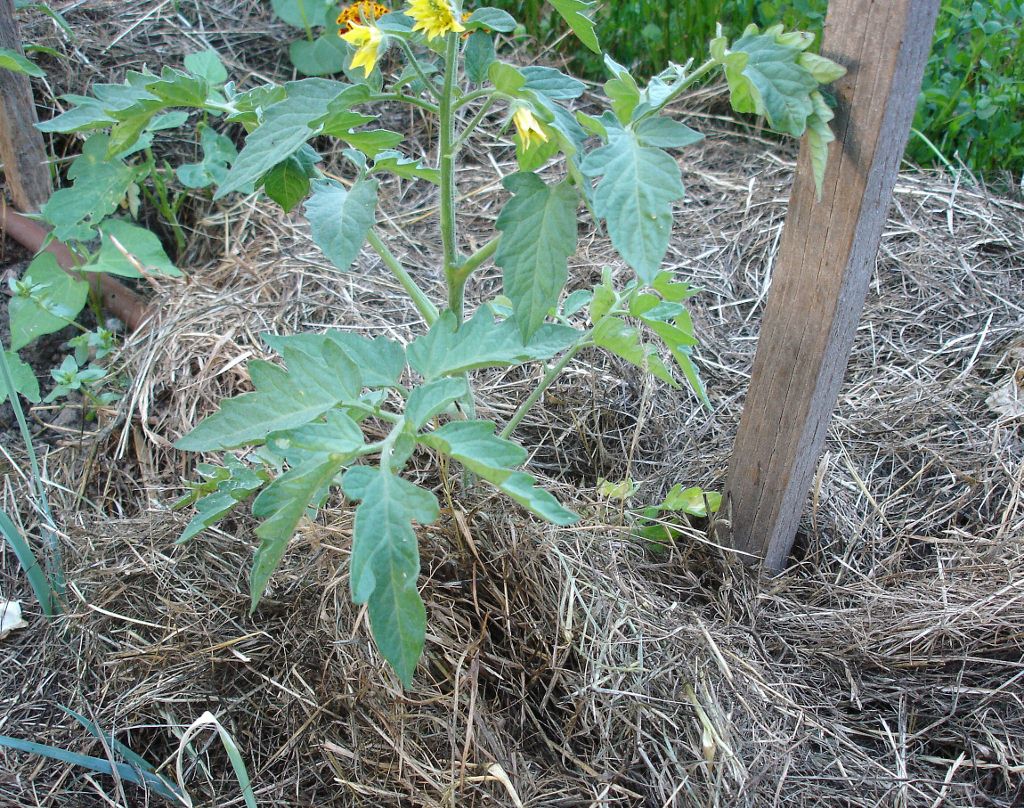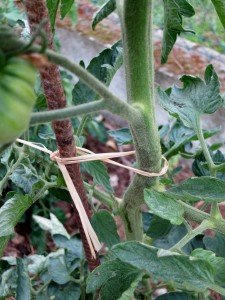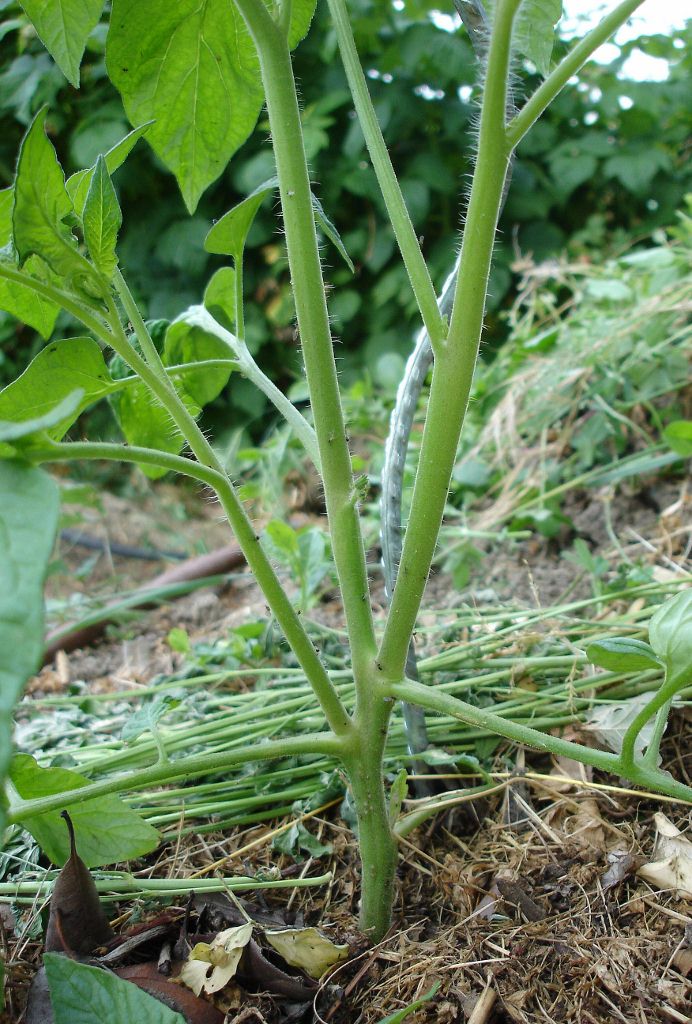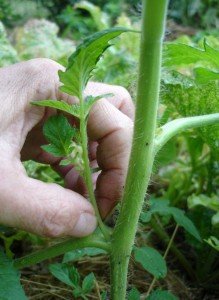Harvesting beautiful tomatoes that you have grown in your garden is probably the thing that gardeners are most proud of.
But the tomato is a plant that stays in the garden for a long time: between 4 and 6 months. To avoid accidents, some of which can be fatal, here are 7 things you should do to put all the chances on your side.
Contents
Mulch generously

To keep the soil permanently moist, a thick mulch (5 to 10 cm) should be spread at the foot of the tomato plants and all around.
All kinds of mulch can be used: dried grass clippings, hay, straw, etc…
Another advantage of mulching is that the lower leaves (and sometimes the first fruits) will no longer be in direct contact with the soil and will not risk to catch rot.
Take care of the watering
Tomatoes hate watering spurts. Not watering regularly enough can cause “black-bottom” disease, where the underside of the tomato is black as charcoal.
Too much water can also cause tomatoes to burst.
On the other hand, it is important to avoid wetting the leaves in order not to encourage diseases.
Don’t overtighten the ties

In order not to hinder the growth of the stems, there is a special way to attach the ties to the stake: make a “figure eight” and leave some slack around the stem.
Strengthen their defenses with liquid manure
These plant-based preparations have a multi-level action. Neither fertilizers (they do not contain enough mineral elements), nor pesticides (they do not kill parasites), they are elicitors that reinforce the immunity of plants, stimulate their growth, and help them mobilize their natural defenses against aggressions.
The most famous is nettle manure, or rather fermented nettle extract, which is prepared by soaking fresh nettles in water. Similarly, there is fermented comfrey extract.
These “purins” are recommended as a preventive measure, i.e. before a disease appears.
During the whole period of cultivation, one or two sprays per month of a mixture of fermented nettle extract and comfrey (each diluted to 5%) can be used.
grow other plants with them

There are two companion plants that have beneficial effects for tomatoes:
- marigolds (or tagetes) that keep nematodes, microscopic worms that attack the roots of tomato plants, away.
- Basil, which is said to enhance the taste of tomatoes.
On the other hand, there are two vegetables that do not go well with tomatoes: beets and fennel.
Simplify the size

Traditional tomato cultivation recommends growing the plant with a single stem, which can result in very tall plants, up to 2m50!
I prefer to let the plants grow on 2 or 3 stems. They are then stronger to resist the wind.
Every 2 or 3 days, it is necessary to go around your tomato plants to eliminate the gourmands which sometimes grow in a spectacular way.

At the end of the summer, there is no point in removing the leaves to ripen the tomatoes because it is the heat and not the light that makes them ripen.
Cherry tomatoes do not need to be pruned as they are very vigorous.
Take care of diseases
Downy mildew is capable of wiping out a tomato plantation in a few days in case of a strong attack. Fortunately, there are solutions to avoid it:
If you live in a region with humid summers:
- I do not recommend treating with Bordeaux mixture. Indeed, the copper it contains ends up poisoning the soil (and we already have enough heavy metals in our plate!).
- Instead, we can turn to baking soda, which many gardeners find effective.
- a solution that has been tested and that gives excellent results is to install shelters that protect tomatoes from rain. Air needs to circulate, so these shelters are made of a vertical wall (oriented to shelter from prevailing winds) and a “roof”.
In regions where summers are drier :
- no treatment and if mildew appears (which is rare), pull out the few affected leaves. Most of the time, the disease will stop there.
I hope you enjoyed these tips, and that they will help you keep your tomato plants healthy all summer long.
I have prepared a mini-guide to complement this article. You can download it for free by signing up below.

